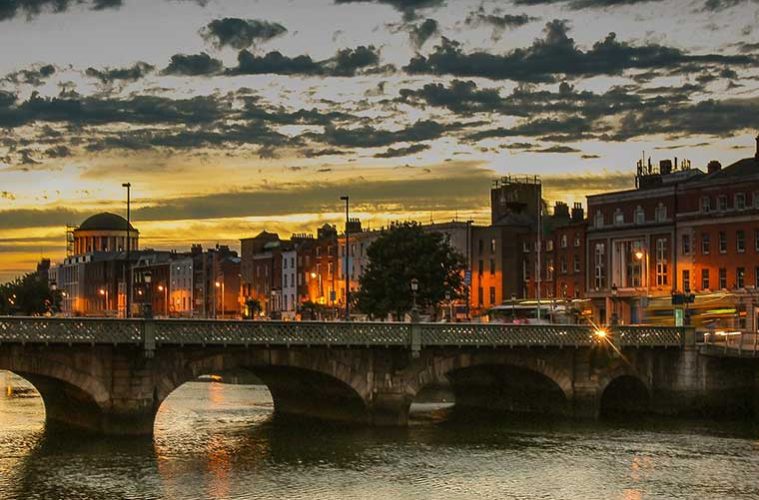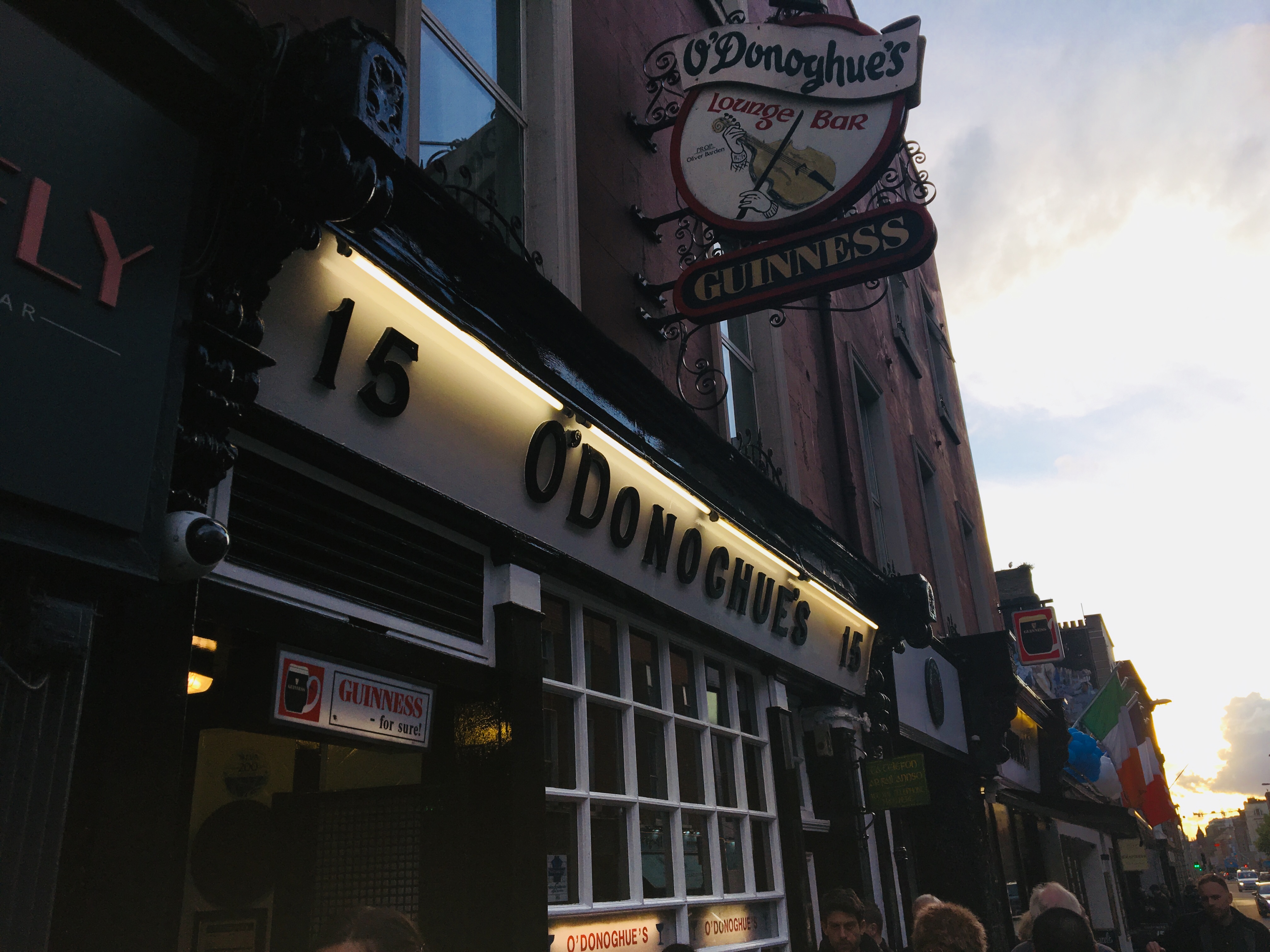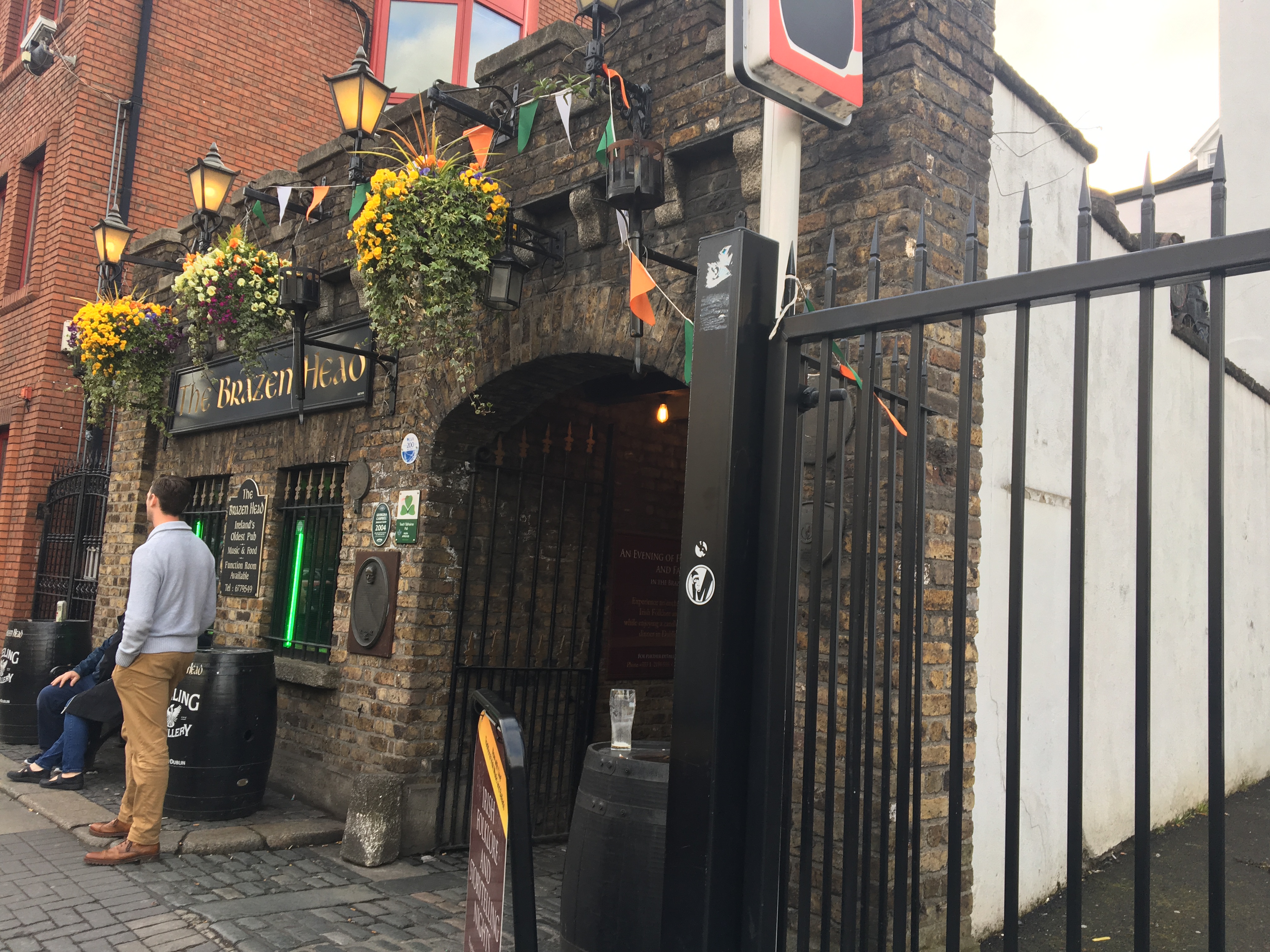Dublin is a place to take your time over. Linger over a pint of Guinness or immerse yourself in the city’s rich history of literature, music, myth and legend. This pocket guide gives you tips to make the most of a whistle stop tour and guarantee you have the “craic”.
Where to stay
The city is divided by the River Liffey into the north and south.
The trendiest place to stay has to be The Clarence, a 19th century building that has been spectacularly renovated by Irish rock band U2. It’s located in Temple Bar and overlooks the Liffey.
The Croke Park, north of the Liffey, is right across the road from the legendary Croke Park stadium, the heart of Irish sporting life. The hotel offers a number of packages including one that allows you to tour the stadium and visit its museum.
Cassidy’s forms one of the city’s famous Georgian terraces and is located north of the river on Parnell Square. Describing itself as “a little gem in the heart of Dublin“, this hotel promises a traditional warm Irish welcome and a central location from which to explore this cosmopolitan city.
Where to eat
The city is not short of excellent eateries.
Sample some of the famous seafood at Klaw, south of the River Liffey on Crown Alley. Winner of 2018 Irish Restaurant Award, Klaw provides “crabshack dining” – try the lobster roll or a pot of mussels.
Bewley’s Cafe and Restaurant is located on Grafton Street, the city’s famous shopping precinct. This iconic cafe opened in 1927 and is a favourite spot for shoppers. Try its infamous sticky bun or choose from its amazing array of cakes and pastries.
For one of the finest breakfasts the city has to offer, visit Beanhive on Dawson Street. Try the full Irish and sample Ireland’s famous white pudding in one of the tastiest breakfasts you’ll ever eat.
For a great value lunch, choose a lunch box from PHX Bistro on the north side of the city in Ellis Quay. Soup, fries and a sandwich come with a soft drink for around €10 and is a regular haunt for locals, a guarantee that this is a great place to eat.
Where to shop
Grafton Street is probably the most famous pedestrian area in the city with an array of up-market shops featuring high-street names and Irish stores including Brown Thomas and Dunne’s. Wander the street between Trinity and St Stephen’s Green and enjoy the talent of the buskers that line the route.
Visit Carroll’s Gifts, 100% Irish owned and stocked with traditional Irish gifts including Aran knitwear, Celtic jewellery and Guinness merchandise. Stores are located across the city and have thousands of Irish souvenirs available at excellent prices.
North of the river is Henry Street, where the stores are better value than on the south. Arnotts, dating from 1843, is one of the city’s most attractive stores, and this busy area is full of local colour.
What to do
There’s plenty to do in Dublin, and a lot can be done for free.
Trinity College was founded in the 16th century and famous alumni include Oscar Wilde, Bram Stoker and Jonathan Swift. Enter Trinity through its West Front and step into a cobbled quadrangle to view an array of fine 18th and 19th century buildings that make up this famous educational institution.
The Book of Kells is one of the city’s most treasured possessions, an illuminated manuscript dating from 800AD and given to Trinity in 1654 by the Bishop of Meath. An admission fee applies to see this beautifully decorated manuscript, but that includes a visit to the Old Library’s magnificent Long Room with its 200,000 strong collection of books housed in antiquated oak bookcases.
Top tip: book for an early morning tour and enjoy a quieter time to view this famous medieval manuscript without the crowds.
The bohemian Temple Bar is a lively area known as Dublin’s cultural quarter and there’s always something going on: outdoor film screenings, live music and the Fringe Festival during autumn. Visit City Hall on Cork Hill and take a trip to the Irish Rock N Roll Museum or just relax in one of the many bars, cafes and restaurants that you’ll find on the cobbled streets.
Christ Church and St Patrick’s Cathedrals, both south of the river, are well worth a visit to see beautiful artefacts and architecture. Discover how the term “chancing your arm” was coined and visit the graves of Dublin’s famous sons and daughters at these iconic churches, part of Ireland’s religious institution.
St Stephen’s Green, at the end of Grafton Street, is a beautiful public space that played a pivotal role in the Easter Rising of 1916. Take a walk round the park and read the information boards to find out more about this historical event and the part it played in the creation of the Irish Free State.
A visit to Ireland wouldn’t be complete without a drop of the black stuff, for which the city is so famous. Visit the Guinness Storehouse at St James’ Gate to find out how this iconic drink is brewed and learn about the six-steps that need to be followed for the perfect pint.
Many of the city’s pubs have regular live music, usually starting around 9pm, but for a traditional Irish pub experience, try The Brazen Head, Ireland’s oldest pub dating from 1198, or home of Irish singers, The Dubliners, at O’Donoghue’s for an experience of Dublin’s most talked about bar.
How to get there
Most UK airports operate daily flights to Dublin Airport. Take the 747 Airlink bus from the airport into the centre of the city, for around €7 per person. The main bus station is located on the northern side of the Liffey and regular tram and bus services operate both sides of this famous river. Dublin is great for exploring on foot – just make sure you look both ways before crossing the roads, as this is a busy city.






